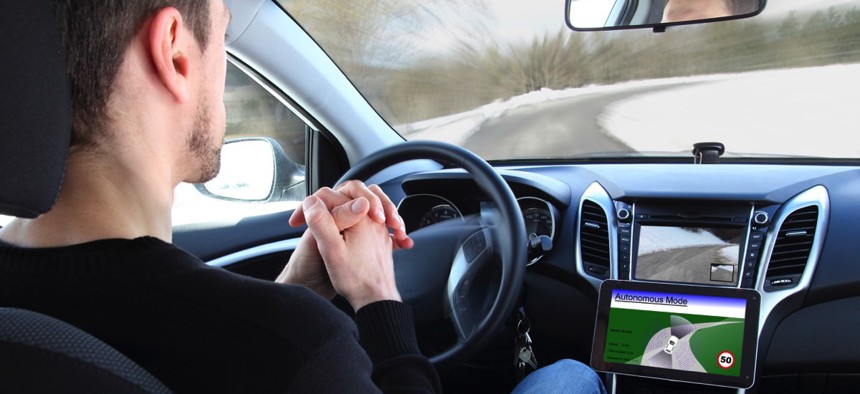Anybody Can Test a Driverless Car in Pennsylvania


Connecting state and local government leaders
As long as there’s a licensed human sitting in the driver’s seat, you don’t need a special permit for your vehicle to drive itself.
Uber’s self-driving cars are today available to passengers in Pittsburgh, a move that signals the ride-sharing giant’s seriousness about its future with autonomous vehicles. It is a pivotal moment for the company—yet Uber had to clear surprisingly few regulatory hurdles to get to this point.
That’s because all you need to operate a self-driving vehicle on public roads in Pennsylvania is the right technology: no special permit or license, no unique registration, no safety clearance, nothing. Uber’s driverless taxis will have humans sitting behind the wheel—ready to take control of the vehicle if necessary—and that’s all that matters under Pennsylvania law.
“As long as there is a licensed driver in the driver’s seat operating the vehicle, they do not need to be touching the steering wheel,” said Kurt Myers, the deputy secretary for Driver and Vehicle Services for the Pennsylvania Department of Transportation.
“At this time, that’s the case because the law is silent,” Roger Cohen, the department’s policy director, told me. “It doesn’t anticipate this technology coming on.”
This approach has made Pittsburgh “ideal grounds for one of Silicon Valley’s boldest experiments,” but it has also “ignited criticism that the city is giving away its keys to Uber,” Cecilia Kang wrote for The New York Times over the weekend. It’s also not going to last.
Cohen and Myers are co-chairs of a Pennsylvania task force that is developing guidance for self-driving car policies. (Pennsylvania lawmakers have already filed at least two bills related to the testing and operation of driverless vehicles.)
But developing such policies is complex for several reasons. First, existing traffic laws and insurance systems are fundamentally concerned with human drivers. And even in states like California, which has more robust permitting processes for testing driverless cars on public roads, there’s little if any cross-jurisdiction standardization—meaning it’s unclear how rules of the road might change as vehicles cross state lines. Finally, there’s still much about the technology that’s uncertain, including exactly how it will be adopted by the masses. While companies like Tesla are already testing partially-automated systems on public roads, for example, companies like Google are attempting to build fully-automated vehicles from the ground up. Either approach requires distinct regulatory considerations.
The task force in Pennsylvania—which includes a mix of government officials and self-driving car manufacturers—has been meeting twice monthly since June, and is anticipating long-awaited federal guidelines on autonomous vehicles from the National Highway Traffic Safety Administration this fall. The guidelines may be handed down as soon as this month, several stakeholders told me, though a senior official with the Department of Transportation declined to offer specifics on timing.
Although much effort has been devoted to thinking through the policy implications of self-driving vehicles—including independent reports from third parties like the Rand Corporation and countless papers by academics—government officials are still figuring out the best ways to structure oversight.
A shared goal of dramatically reducing traffic deaths has, so far, helped with collaboration between regulators and manufacturers. “Everybody seems to recognize that there’s 35,000 deaths on the highways each year, which is carnage,” Cohen told me.
“Although there are clearly differing and some conflicting priorities in play, everyone shares a commitment to trying to promote the emergence of [autonomous vehicle] technology as effectively and safely as we possibly can because... we owe it to the future to do everything we can to try to get it right,” Cohen said in a follow-up email. Having competitors like GM and Uber as members of the same task force, he says, is a “structural mechanism to safeguard” against favoritism toward any one company.
The other big challenge is to write policy with the understanding that technology will again rapidly change—and probably soon.
“There’s never been anything quite like this, other than the introduction of the automobile,” said Myers, the deputy secretary for Driver and Vehicle Services in Pennsylvania. “Given the fundamental responsibility we have to safety, we recognized early-on that we needed to be flexible in how we did oversight.”
Adrienne LaFrance is a staff writer at The Atlantic, where this article was originally published.

NEXT STORY: Express Lanes Have a Popularity Problem




